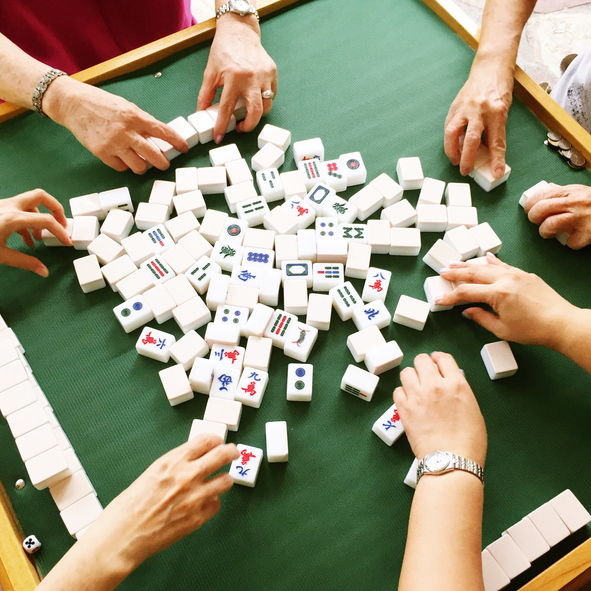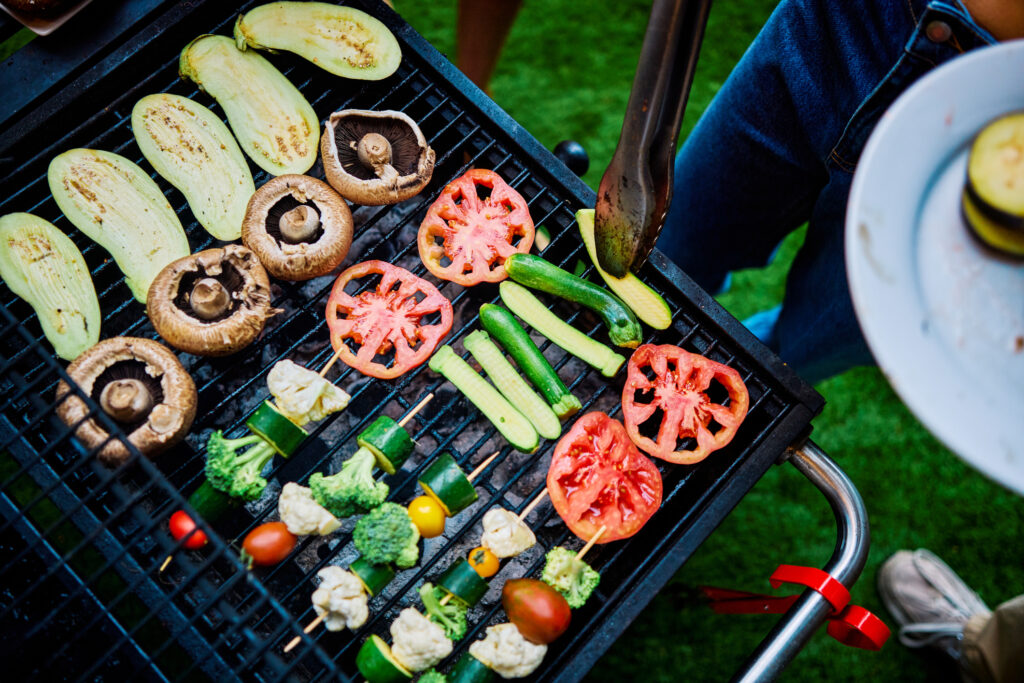Sodalis Blogs
View our upcoming news updates at Sodalis!
- All
The Fascinating History of Mahjong: From Ancient Origins to Modern Popularity
Mahjong, a game renowned for its strategic depth and cultural significance, has captivated players around the world for centuries. Its origins are shrouded in mystery, blending history, mythology, and tradition. In recognition of its cultural importance, August 1 is celebrated as International Mahjong Day, bringing players worldwide together to honor and enjoy the game. In this blog post, we’ll explore the intriguing history of Mahjong, tracing its roots from ancient China to its modern-day global popularity. Origins in Ancient China Mahjong is believed to have originated in China during the Qing Dynasty (1644–1912), although some historians suggest it may date back even earlier. The earliest known references to a game resembling Mahjong appear in Chinese literature from the 19th century, indicating that the game evolved over several centuries. The game’s name, Mahjong (麻将), roughly translates to “sparrow’s game,” which may refer to the sound of tiles being shuffled or a metaphor for the game’s swift, lively pace. Traditionally, Mahjong was played with a set of 136 tiles, featuring various Chinese characters and symbols, each carrying cultural and symbolic significance. Evolution and Variations Initially, Mahjong was a pastime among Chinese elites, often played in private clubs and social gatherings. Over time, regional variations emerged, reflecting local customs and preferences. For example, Chinese Classical Mahjong is the traditional game played with 136 tiles, emphasizing skill and strategy. American Mahjong developed in the early 20th century and introduced new rules, jokers, and a different tile set, making the game more accessible to Western players. Meanwhile, Japanese Mahjong, known as Riichi Mahjong, incorporates unique rules and scoring systems that have gained popularity in Japan. The Spread Beyond China The 20th century marked a period of rapid dissemination for Mahjong beyond China’s borders. Chinese immigrants brought the game to the United States, Southeast Asia, and other parts of Asia. During the early 1900s, Mahjong became a social phenomenon, especially in American cities with significant Chinese communities. In the West, the game was initially seen as a mysterious and exotic pastime. Its popularity soared in the 1920s and 1930s, fueled by gambling, social clubs, and media coverage. The game’s intricate rules and cultural allure contributed to its mystique and widespread appeal. Modern Era and Digital Transformation Today, Mahjong enjoys a global following that continues to grow. The game has evolved into numerous digital versions, allowing players worldwide to compete online. International tournaments, online platforms, and mobile apps have made Mahjong more accessible than ever before. Additionally, Mahjong is recognized for its cultural significance and as a means of fostering social bonds. UNESCO has even designated certain traditional Mahjong practices as part of intangible cultural heritage, emphasizing its importance beyond just a game. Conclusion From its ancient Chinese roots to its modern digital presence, Mahjong’s journey is a testament to its enduring appeal and cultural richness. Whether played casually or competitively, the game continues to bring people together, celebrating strategy, tradition, and camaraderie across the globe.
Celebrating Grandmothers Worldwide: Rich Traditions and Their Deep Significance
Grandmothers hold a special place in our hearts and societies worldwide. They are the bearers of family history, wisdom, and love, shaping generations with their nurturing presence. Across different cultures, the role and reverence of grandmothers are celebrated through unique traditions, rituals, and stories that highlight their significance. In recognition of their enduring importance, Gorgeous Grandmas Day is celebrated on July 23, honoring these remarkable women. Let’s explore how various cultures honor their grandmothers and what these traditions reveal about the universal value of this cherished figure. The Cultural Tapestry of Grandmother Celebrations China: Respect for Elders and Ancestral Lineage In Chinese culture, filial piety is a core value. Grandmothers are revered as the matriarchs who maintain family harmony and uphold ancestral traditions. During festivals like the Double Ninth Festival (Chongyang Festival), families honor elders by climbing mountains, drinking chrysanthemum wine, and sharing stories. These acts symbolize respect, longevity, and the continuity of family heritage. México: Día de las Abuelas (Grandmothers’ Day) Mexico celebrates Día de las Abuelas on October 28th, emphasizing the vital role grandmothers play in nurturing cultural identity and values. Grandmothers are often seen as custodians of culinary traditions, storytelling, and family history. It’s common for families to gather around to honor their matriarchs with special meals, gifts, and heartfelt appreciation. India: Respect and Reverence In India, grandmothers (or Dadi) are revered for their spiritual guidance and wisdom. They often participate in religious rituals, impart moral lessons, and serve as the emotional anchors of the family. Festivals like “Raksha Bandhan” celebrate the bond between brothers and sisters, but also honor the elders’ role in fostering family bonds. Africa: Matriarchal Respect and Community Bonds Many African communities honor grandmothers as “Elders” who are the custodians of tradition, language, and history. In countries like Nigeria and Ghana, grandmothers are central figures in community decision-making and cultural preservation. Celebrations may include storytelling, dance, and communal gatherings that reinforce their revered status. United States and Western Countries: Celebratory and Appreciative In Western societies, Grandparents’ Day (celebrated on the first Sunday after Labor Day in the U.S.) is an occasion to honor grandmothers and grandfathers. Families often give cards, flowers, or spend quality time together. The emphasis is on expressing gratitude and acknowledging the wisdom and love that grandmothers provide. The Significance of Celebrating Grandmothers Across cultures, honoring grandmothers signifies more than just familial respect—it’s a recognition of their vital role in shaping societal values and transmitting cultural traditions. Their stories serve as living history, their guidance offers moral grounding, and their care sustains family bonds. Celebrations also provide an opportunity for younger generations to learn about their roots, appreciate their heritage, and foster intergenerational connections that strengthen family unity. In Conclusion Grandmothers are the living bridges between past and present, tradition and modernity. Whether through festivals, family gatherings, or everyday acts of love, cultures worldwide honor these remarkable women for their wisdom, nurturing spirit, and enduring influence. Celebrating grandmothers reminds us of the importance of family, tradition, and the timeless bonds that unite us all.
Beyond Burgers and Brats: Innovative Grilling Ideas to Elevate Your Next Backyard Cookout
When it comes to summer cookouts, the classic burger and bratwurst are staples that never go out of style. Since July is National Grilling Month, it’s the perfect time to celebrate by trying new recipes and techniques. If you’re looking to elevate your next backyard gathering and surprise your guests with new flavors and exciting dishes, it’s time to think outside the grill. Here are some creative grilling ideas that will turn your cookout into a memorable culinary adventure. One fantastic way to add color and flavor is by grilling stuffed vegetables. Instead of sticking with the usual veggie skewers, try filling bell peppers, zucchinis, or portobello mushrooms with cheeses, herbs, grains, or even ground meats. When grilled, these stuffed vegetables become juicy, flavorful bites that are as beautiful as they are delicious, offering a satisfying vegetarian option that everyone will enjoy. Seafood is another excellent choice for grilling, adding a touch of sophistication to your outdoor feast. Marinate shrimp in garlic, lemon, and herbs, then skewer and grill for a quick and tasty appetizer. Fresh salmon fillets or even whole fish like snapper or branzino can be seasoned simply and grilled directly on the grates. The smoky, tender results make seafood dishes stand out in any backyard cookout. Kebabs are incredibly versatile and customizable, making them perfect for creative grilling. Mix and match meats such as chicken, beef, or lamb with vegetables, fruits like pineapple or peaches, and even cheese. Marinate the ingredients beforehand to infuse them with flavor, then thread everything onto skewers before grilling to perfection. They’re easy to serve and always a crowd-pleaser. For a fun and interactive twist, consider grilling pizza. Roll out your favorite dough, brush it with olive oil, and add toppings like fresh tomatoes, basil, mozzarella, or prosciutto. Place the pizza directly on the grill or use a pizza stone for an authentic, smoky crust. It’s a great way to serve up a hot, cheesy pie that will impress guests of all ages. End your meal on a sweet note by grilling fruits such as peaches, pineapple, or watermelon. The heat caramelizes their natural sugars, creating a smoky, sweet flavor. Drizzle with honey, balsamic reduction, or sprinkle with cinnamon for a delightful dessert that’s both healthy and satisfying. Finally, don’t forget about side dishes. Grilled corn on the cob with chili lime butter is always a hit, but you can also experiment with grilled sweet potatoes, asparagus, or even avocado halves. These flavorful sides add variety and help round out your menu, making your cookout a truly memorable event. To ensure a successful and enjoyable grilling experience, prep your ingredients ahead of time by marinating meats and vegetables. Use the right tools, such as good skewers, grill baskets, and a thermometer, to achieve perfect results. Most importantly, have fun experimenting with new ingredients and techniques—grilling is all about creativity. This July, go beyond the usual burgers and brats to impress your guests with these innovative ideas. With a little imagination and some flavorful ingredients, your backyard cookout will be the talk of the neighborhood, leaving everyone eager for the next outdoor feast.
Ice Cream Matchmaker: Perfect Pairings for Every Flavor
Ice cream is the ultimate treat that brings joy to any occasion—whether it’s a casual summer gathering, a birthday celebration, or a simple dessert after dinner. In fact, July is celebrated as National Ice Cream Month, honoring this beloved dessert. Did you know that pairing your favorite ice cream flavors with complementary accompaniments can elevate the entire experience? From crunchy toppings to flavorful sauces, the right pairing can turn a scoop into a memorable indulgence. Let’s explore some delicious ice cream pairings tailored to different flavors. Starting with the versatile classic, vanilla ice cream serves as a perfect blank canvas that pairs beautifully with a variety of toppings. Fresh berries like strawberries, blueberries, or raspberries add a burst of natural sweetness and freshness that complements vanilla’s creamy neutrality. Drizzling warm chocolate sauce over vanilla creates a delightful contrast, while toasted nuts such as almonds, pecans, or walnuts add satisfying crunch and depth of flavor. For an extra touch of texture, shortbread cookies or biscotti are excellent choices, providing a crispy element that balances the smoothness of the ice cream. Rich chocolate ice cream, on the other hand, calls for accompaniments that enhance its decadent profile. A sprinkle of chili or spiced nuts introduces an intriguing heat and complexity, making each bite more exciting. Caramel or butterscotch sauces amplify the indulgence, blending seamlessly with the deep cocoa flavor. Fruits like bananas and raspberries offer a sweet, tangy contrast that balances the richness of the chocolate. To top it off, a dollop of whipped cream adds a light, airy finish to this luxurious pairing. Lemon-flavored ice cream is bright, citrusy, and refreshing, making it perfect for pairing with ingredients that amplify its zing. Fresh mint leaves lend a cooling, aromatic touch, while a drizzle of blueberry or raspberry coulis enhances its tartness and adds a splash of color. Light, buttery shortbread or lemon cookies complement the citrus notes beautifully, creating a harmonious balance. A simple swirl of whipped cream keeps the dessert light and airy, making it an ideal palate cleanser or summer treat. For lovers of the creamy, nutty butter pecan, the pairing options lean toward warm, caramelized flavors. Drizzling caramel over the ice cream elevates its sweet, toasted pecan notes, while roasted pecans or walnuts reinforce the nutty theme with added crunch. Sliced bananas or a touch of honey or maple syrup can further enhance this cozy, comforting flavor profile. These combinations work together to create a dessert that feels indulgent yet satisfying. Finally, fruity strawberry ice cream offers a perfect blend of sweetness and juiciness. Pairing it with chocolate chips or syrup creates a classic strawberry-chocolate combo that’s beloved by many. A balsamic reduction adds a layer of sophistication, bringing out the fruit’s natural brightness. For added texture, shortbread or vanilla wafers provide a delightful crunch, while fresh mint leaves introduce a refreshing herbal note that lifts the entire dish. When it comes to crafting the perfect ice cream pairing, a few tips can help. Balancing contrast and complement is key—pair rich flavors with light, fresh elements or enhance subtle notes with bold accompaniments. Mixing textures by combining crunchy, creamy, and chewy components creates a more satisfying experience. Additionally, playing with temperature—such as serving warm sauces over cold ice cream—adds delightful contrasts that excite the palate. Final Scoop Whether you prefer classic vanilla or more adventurous flavors like matcha or salted caramel, the right pairings can transform a simple scoop into an extraordinary dessert. Don’t be afraid to experiment and discover what combinations delight your taste buds the most. After all, ice cream is all about enjoying sweet moments, and the perfect pairing makes those moments even more memorable. Enjoy your ice cream adventures, and happy tasting!
Celebrate with Your Furry Friends: Pet-Friendly 4th of July Tips
The Fourth of July is a festive time filled with fireworks, barbecues, and gatherings that celebrate our nation’s independence. While these festivities are enjoyable for humans, they can be quite stressful and frightening for pets. The loud noises, bright explosions, and bustling crowds can cause anxiety or even lead to pets trying to escape in their panic. To ensure your furry friends remain safe and comfortable during the holiday, it’s important to take some proactive steps. One of the best ways to protect your pets is to prepare a safe, quiet space inside your home where they can retreat during fireworks displays. This could be a cozy corner with their favorite blankets, toys, and access to water. Consider using calming products such as pheromone diffusers or sprays that promote relaxation. Keeping pets indoors is highly recommended; it minimizes their exposure to loud noises and reduces the risk of escape or injury. Make sure all windows and doors are secure so they cannot slip out if they become frightened. Another crucial step is to ensure your pets are easily identifiable in case they run away. Update their identification tags with current contact information, and if your pet is microchipped, verify that the chip information is up to date. During celebrations, it’s best to keep harmful items like fireworks, sparklers, and other pyrotechnics out of their reach. Never allow pets to play with fireworks, as they can cause burns, injuries, or poisoning if ingested. Food safety is also important. The holiday barbecues and parties often include tempting human foods that can be toxic to pets, such as chocolate, grapes, onions, and alcohol. Keep all food and drinks securely stored away from your pets’ reach. If your pet is especially anxious, talk to your veterinarian about calming aids or medications. Playing soothing music or white noise can also help drown out the loud fireworks and provide a more peaceful environment. Planning some exercise earlier in the day can help your pet burn off excess energy, making them more relaxed during the fireworks. If you’re hosting guests, inform them about your pet’s needs and ask everyone to keep noise levels down and avoid sudden movements that might startle your pet. After the fireworks are over, take a walk around your yard to check for any debris or unexploded fireworks that could pose a danger to curious animals. Above all, stay calm and reassuring. Pets are sensitive to their owners’ emotions, so your calm demeanor can help soothe their fears and anxieties. With a little planning and preparation, you can help ensure that everyone in your family — furry friends included — enjoys a safe and joyful Fourth of July celebration.
Honoring the Rhythms of June: Celebrating National African-American Music Month
June shines brightly as a special time to honor and celebrate the rich, vibrant, and influential contributions of African-American artists to the world of music. Recognized as National African-American Music Month, this dedicated period provides an opportunity to reflect on the profound impact that African-American musicians have had on shaping musical genres, cultural movements, and societal change. A Legacy of Innovation and Influence African-American music has been at the forefront of cultural innovation for centuries. From the soulful melodies of blues and jazz to the revolutionary sounds of hip-hop and R&B, Black artists have consistently pushed boundaries and created new musical landscapes. These genres not only entertain but also serve as powerful platforms for storytelling, activism, and community building. Jazz and Blues: Emerging from the Deep South in the early 20th century, jazz and blues laid the foundation for many modern genres. Legends like Louis Armstrong, B.B. King, and Ella Fitzgerald revolutionized music with their virtuosity and emotional depth. Motown and Soul: The Motown sound, pioneered by artists like Stevie Wonder, Marvin Gaye, and Diana Ross, brought African-American music into mainstream America, fostering cross-cultural appreciation and breaking racial barriers. Hip-Hop and R&B: The rise of hip-hop in the 1970s and 1980s, with pioneers like Grandmaster Flash and Tupac Shakur, transformed music into a voice for marginalized communities, addressing social issues and inspiring generations. Celebrating Cultural Contributions National African-American Music Month is not only about enjoying great music but also about recognizing the cultural significance and resilience behind these sounds. It’s a time to honor those who have used music as a tool for activism, empowerment, and cultural expression. Many organizations, radio stations, museums, and community centers host events, concerts, and educational programs throughout June to highlight the history and ongoing contributions of African-American musicians. How You Can Celebrate Discover New Artists: Dive into playlists featuring legendary figures and contemporary artists shaping today’s music scene. Attend Events: Participate in local concerts, virtual festivals, or museum exhibits celebrating African-American music history. Support Black-Owned Music Venues and Businesses: Your patronage helps sustain spaces that showcase Black talent. Educate and Share: Learn about the history of African-American music and share stories of influential artists to raise awareness. Conclusion June’s designation as National African-American Music Month reminds us of the enduring legacy and ongoing evolution of Black music. It’s a celebration of creativity, resilience, and cultural pride—a time to listen, learn, and honor the voices that have profoundly shaped our musical landscape and society at large. Let’s use this month to appreciate the sounds that have inspired generations and continue to spark change today.
Discovering Perfect Food Pairings with Rosé Wine: A Guide to Elevate Your Dining Experience
Rosé wine has become a beloved choice for many wine enthusiasts and casual drinkers alike, thanks to its versatility, refreshing character, and beautiful range of colors and flavors. With National Rosé Day coming up this Saturday, it’s the perfect occasion to celebrate this delightful wine. Whether you’re hosting a summer barbecue, enjoying a casual brunch, or celebrating a special occasion, pairing the right food with rosé can elevate your experience and bring out the wine’s best qualities. In this blog post, we’ll explore some delightful food pairings that complement various styles of rosé wine. Why Rosé? The Versatility of This Summer Favorite Rosé wines are made from red grape varieties, with their pink hue resulting from limited skin contact during fermentation. Their flavor profiles can range from light, crisp, and fruity to more complex and structured, depending on the grape varieties and production methods. This diversity makes rosé an incredibly adaptable pairing partner. Classic Pairings for Light & Crisp Rosé Seafood & Shellfish Light, crisp rosés—especially those with citrus and strawberry notes—are perfect with seafood. Think grilled shrimp, oysters, ceviche, or sashimi. The wine’s acidity cuts through the briny flavors while complementing the freshness. Salads & Fresh Vegetables A chilled rosé pairs beautifully with fresh salads, especially those with berries, goat cheese, or vinaigrette dressings. Its fruitiness enhances the freshness of the greens and vegetables. Light Poultry Dishes Grilled chicken or turkey with herbs are excellent companions. The wine’s subtle fruit flavors and acidity balance the savory elements. Pairings for Medium-Bodied & Fruity Rosé Spicy Cuisine Rosés with a bit more body and fruitiness work well with mildly spicy dishes—think Thai salads, Mediterranean mezze, or Mexican grilled chicken. The fruitiness and acidity help tame the heat. Charcuterie & Cheese Boards A medium rosé complements a variety of cured meats, prosciutto, and cheeses such as feta, mozzarella, or soft brie. Add some olives, nuts, and fresh fruit for a complete pairing. Pasta with Light Sauces Think of pasta primavera, seafood pasta, or dishes with tomato-based sauces. The wine’s bright acidity enhances the flavors without overpowering them. Pairings for Richer & More Structured Rosé Grilled Meats & Roasted Vegetables A more robust rosé, such as those from Provence or certain Spanish styles, pairs nicely with grilled lamb, beef, or roasted root vegetables. International Cuisines Dishes like Spanish paella, Moroccan tagines, or Italian risottos with hearty ingredients find a harmonious partner in richer rosés. Spiced & Umami Flavors The complexity of some rosés with mineral notes can stand up to umami-rich dishes like mushroom risotto or soy-glazed meats. Tips for the Perfect Pairing To ensure the best pairing experience, it’s helpful to match the wine’s intensity with the dish’s richness—lighter rosés with delicate foods, and more robust rosés with hearty dishes. Considering the flavor profile is also key; fruity rosés match well with dishes that have complementary fruit or spice elements. Serving rosé at the right temperature, typically between 45-55°F (7-13°C), helps preserve its freshness and fruitiness. Ultimately, the best pairings often come from a little experimentation—don’t hesitate to try unconventional combinations and discover new favorites. Final Thoughts Rosé wine’s versatility makes it an excellent choice for a wide array of dishes. From fresh seafood and salads to hearty grilled meats, there’s a rosé pairing for every occasion. By understanding the wine’s style and flavor profile, you can craft memorable meals that highlight the best qualities of both the food and the wine. So next time you uncork a bottle of rosé, consider exploring these pairing ideas to enhance your dining experience. Cheers to good food, great wine, and unforgettable moments!
The Joy of Hiking: Connecting with Nature, Embracing Challenges, and Boosting Wellness
Hiking is more than just walking on trails; it’s a beloved activity that captures the hearts of millions around the world. In celebration of National Great Outdoors Month, it’s the perfect time to embrace and appreciate the natural beauty around us. Whether it’s a leisurely stroll through a local park or a challenging ascent up a rugged mountain, hiking offers a unique blend of physical, mental, and emotional benefits that explain its enduring popularity. But what exactly makes people fall in love with hitting the trails? Let’s explore some of the key reasons. One of the most compelling reasons people love hiking is the opportunity to immerse themselves in the natural world. Escaping the hustle and bustle of city life and stepping into serene forests, mountain vistas, or peaceful lakes provides a profound sense of tranquility. Nature has a calming effect, reducing stress and helping hikers reconnect with the environment and themselves. This connection with nature is often cited as a primary motivator for outdoor enthusiasts, offering a respite from everyday pressures. Hiking is also an excellent form of cardiovascular exercise that engages various muscle groups, from legs and glutes to core muscles and arms. It’s a low-impact activity suitable for people of all ages and fitness levels. Regular hikes can improve cardiovascular health, build strength, enhance endurance, and promote weight management. Many hikers appreciate how outdoor activity keeps them active and motivated compared to gym routines, making it a sustainable and enjoyable way to stay healthy. Beyond physical benefits, hiking significantly contributes to mental clarity and stress relief. Spending time outdoors has been shown to boost mental well-being. The rhythmic nature of walking, combined with the soothing sights and sounds of nature, can alleviate anxiety and depression. Hiking offers a mental break from daily stressors, allowing individuals to clear their minds, reflect, and gain perspective. This mental rejuvenation is often cited as one of the most rewarding aspects of hitting the trails. For many, hiking is also about adventure and challenge. Exploring new trails or conquering difficult terrains provides a sense of excitement and accomplishment. Reaching a summit or completing a tough route boosts confidence and offers a tangible reward for effort. The unpredictable and ever-changing outdoor environment keeps the activity fresh and engaging, motivating enthusiasts to push their limits and discover their resilience. Hiking can be a social activity as well, whether done with friends, family, or organized groups. Sharing experiences on the trail fosters bonds and creates lasting memories. It’s also an excellent opportunity to meet like-minded outdoor lovers and learn from their stories and tips. The social aspect adds an extra layer of enjoyment and motivation, making hiking not just a solitary pursuit but a communal experience. Additionally, hiking provides countless opportunities to observe breathtaking landscapes, diverse flora and fauna, and stunning vistas. This appreciation for natural beauty fosters gratitude and a deeper respect for the environment. Many hikers develop a sense of stewardship, becoming inspired to protect and preserve the outdoor spaces they cherish. The activity’s accessibility and variety also contribute to its popularity. From gentle nature walks to strenuous mountain climbs, hiking offers options suitable for all interests and fitness levels. Trails are accessible worldwide, making it an inclusive activity that anyone can enjoy regardless of location or experience. In conclusion, people love hiking because it enriches their lives in numerous ways—connecting them with nature, boosting physical and mental health, providing adventure, and fostering social bonds. In an increasingly digital and fast-paced world, the simple act of walking through the great outdoors offers a refreshing and restorative experience that keeps drawing us back to the trails. So, lace up your hiking boots, breathe in the fresh air, and discover why so many find their happiness on the trail!
The Importance of Senior Health and Fitness: Embracing Vitality at Every Age
Today, on National Senior Health and Fitness Day, it’s a powerful reminder that health and wellness are essential at every age. As we progress through life, prioritizing our well-being becomes even more important—particularly as we enter our senior years. Adopting a proactive approach to health can not only extend our lifespan but also significantly enhance our quality of life. By embracing healthy habits, we foster independence, joy, and overall vitality, ensuring each stage of life is lived to the fullest. Regular physical activity plays a crucial role in enhancing mobility and balance. By strengthening muscles and improving flexibility, seniors can reduce the risk of falls and injuries, which are common concerns with aging. Staying active allows older adults to perform daily tasks more comfortably and safely, supporting their independence. Moreover, exercise has significant mental health benefits. It has been shown to combat depression, anxiety, and cognitive decline by stimulating brain function, promoting mental sharpness, better memory, and emotional stability. In addition to these benefits, staying active helps manage chronic conditions such as diabetes, hypertension, and arthritis. Consistent exercise and proper nutrition can help control symptoms, reduce reliance on medications, and improve overall health. Physical activity also promotes better sleep quality, leading to deeper, more restful nights that are essential for recovery and maintaining energy levels. Beyond the physical benefits, engaging in fitness activities fosters social connections. Participating in group classes or walking clubs provides opportunities for social interaction, which can help combat loneliness and foster a sense of community. Practical tips for seniors looking to stay active include consulting healthcare professionals before starting new routines, especially if there are existing health concerns. Starting with gentle activities like walking, stretching, or tai chi can be effective and safe. Incorporating strength and flexibility exercises helps maintain muscle mass and range of motion. It’s important to choose activities that are enjoyable, such as dancing, gardening, or swimming, to stay motivated and consistent. Safety should always be a priority—wearing proper footwear, staying hydrated, and exercising in safe environments are key considerations. Ultimately, senior health and fitness are about more than just adding years to life—they’re about adding life to years. Prioritizing physical activity, proper nutrition, and social engagement allows seniors to enjoy a vibrant, independent, and fulfilling life. It’s never too late to start making positive changes; every small step toward activity and wellness counts. Investing in your health today paves the way for a stronger, happier tomorrow, and your future self will undoubtedly thank you.
The Benefits of Taking a Road Trip vs Flying: Which is the Better Adventure?
Save the date for May 23 — National Road Trip Day! It’s the perfect occasion to hit the open road, explore exciting new destinations, and create unforgettable memories. With summer just around the corner, traveling offers a fantastic opportunity to discover fresh places, immerse yourself in diverse cultures, and enjoy meaningful experiences. As you plan your next adventure, one of the key decisions you’ll face is whether to embark on a scenic road trip or to fly to your destination. Both options come with unique benefits, and understanding these can help you choose the journey that best suits your preferences and travel goals. Taking a road trip provides an incredible sense of flexibility and freedom. Unlike flying, where you’re bound by schedules and fixed itineraries, driving allows you to set your own pace, make spontaneous stops, and explore sights that might not be on the typical tourist map. This immersive approach lets you enjoy the scenic beauty of the landscape—whether it’s rolling hills, coastal highways, or quaint small towns—giving you a deeper connection to the region you’re visiting. For groups traveling together, road trips can also be more economical, as sharing the costs of fuel, accommodations, and meals often proves cheaper than purchasing multiple airline tickets. Plus, the spontaneity of a road trip means you can detour to quirky roadside attractions, discover hidden local eateries, or camp under the stars, turning the journey itself into an adventure filled with memorable moments. Traveling in your own vehicle also offers comfort and convenience; you control the environment, music, snacks, and climate, and you have space for gear, souvenirs, or anything else you wish to bring along without airline restrictions. On the other hand, flying offers speed and efficiency that are hard to match, especially for long distances. When time is limited or destinations are far apart, catching a flight allows you to maximize your vacation time and get to your destination quickly. This is particularly advantageous for international travel or remote locations that are difficult to reach by road. Flying also reduces travel fatigue, making it easier to arrive energized and ready to explore. Moreover, air travel opens up opportunities to visit places that are geographically distant or otherwise inaccessible by car, broadening your travel horizons. Modern airlines are known for their high safety standards and punctuality, providing a predictable and reliable means of transportation that can fit seamlessly into well-planned itineraries. Deciding between a road trip and flying ultimately depends on what you value most in your travel experience. If you crave adventure, spontaneity, and a chance to see the journey as part of the destination, a road trip might be the perfect choice. Conversely, if your goal is to save time, cover long distances efficiently, or reach remote or international locations, flying can be the more practical option. Budget considerations also play a role—group travel in a vehicle can be more economical, while solo travelers or those with limited time might prefer the speed of flying. Ultimately, both options offer unique ways to enjoy your travels, and the best choice is the one that aligns with your personal preferences and trip objectives. In the end, whether you’re cruising along scenic highways or catching a quick flight, remember that the journey itself is part of the adventure. Embrace the experience, cherish the memories you create along the way, and enjoy every mile. Safe travels and happy exploring!














